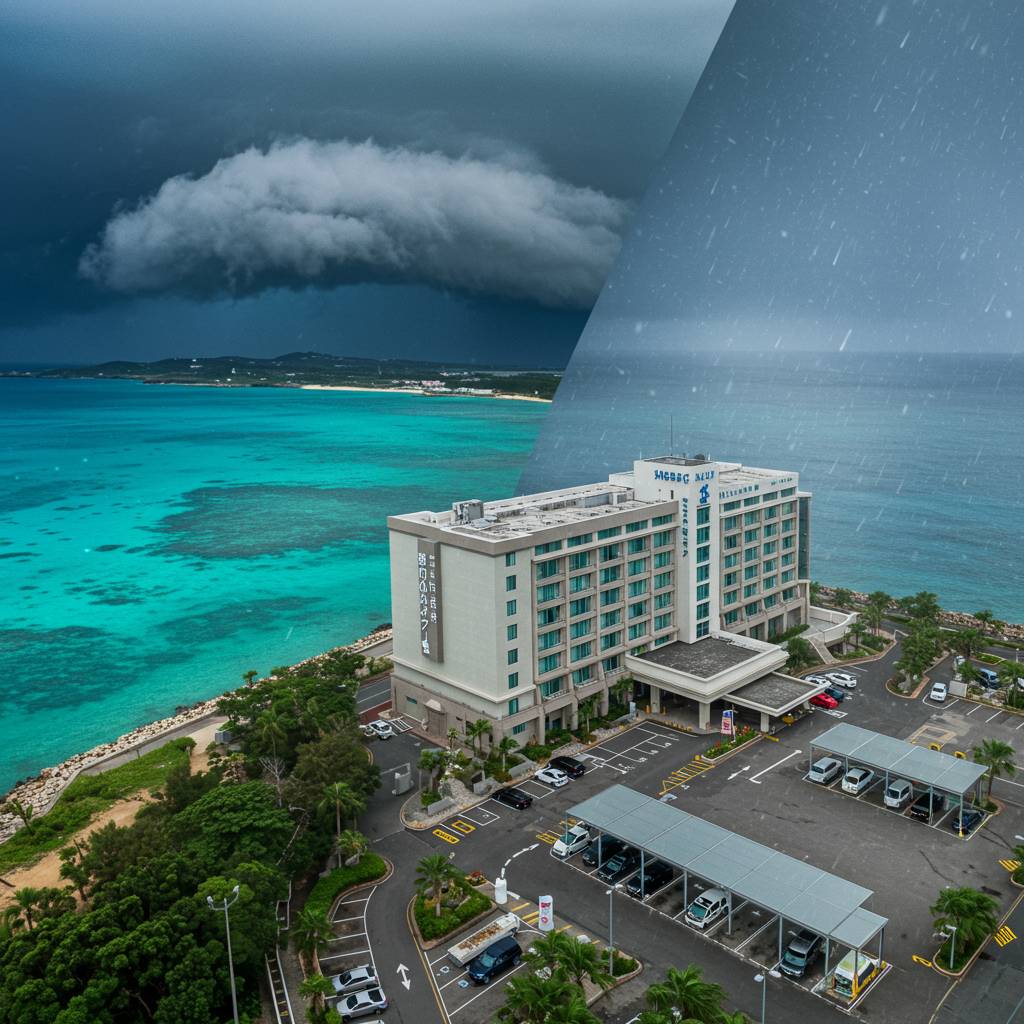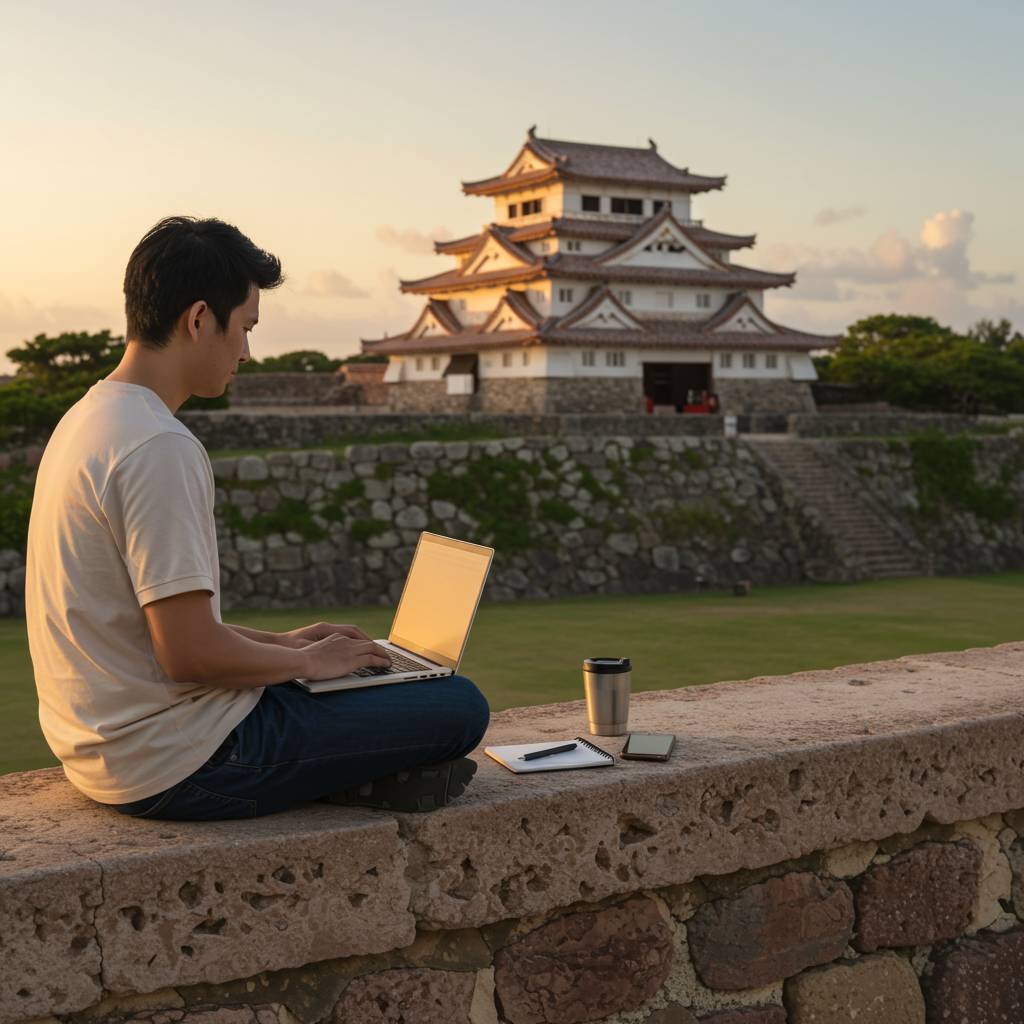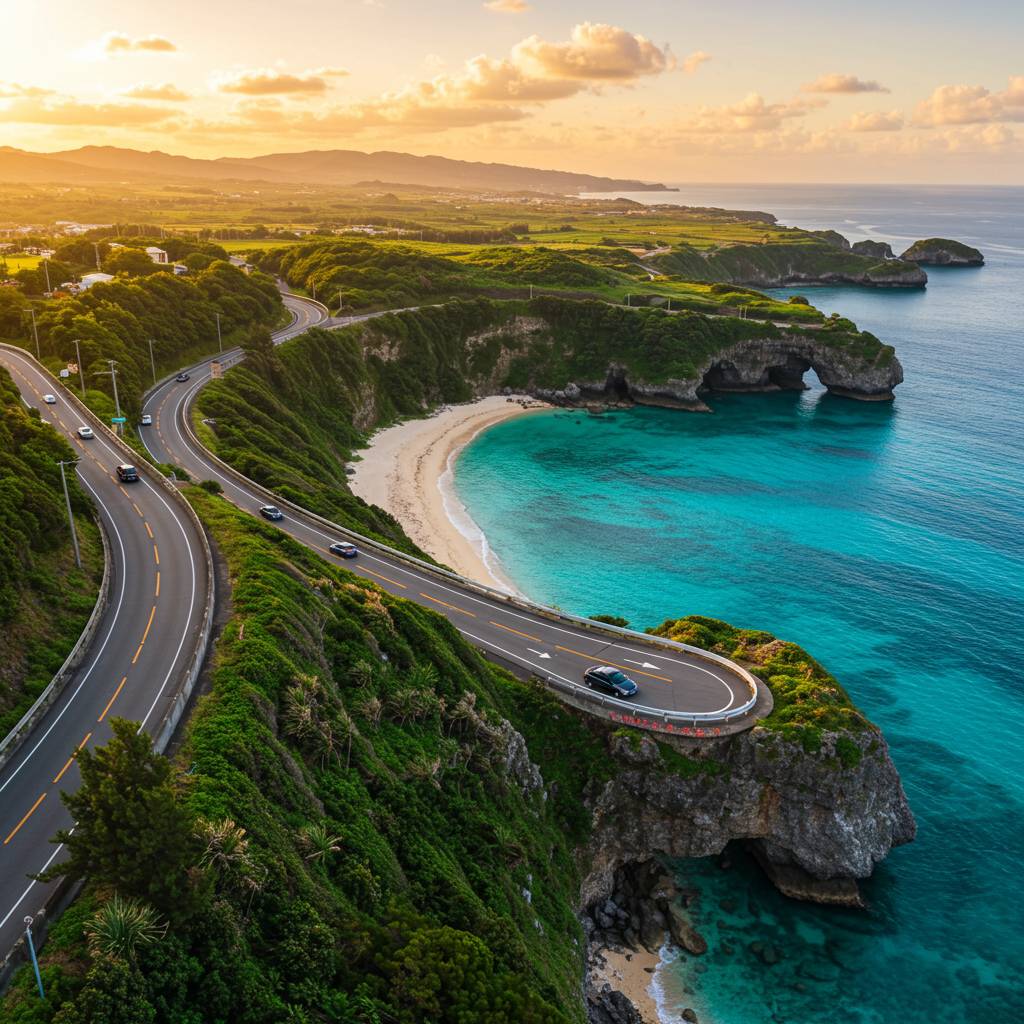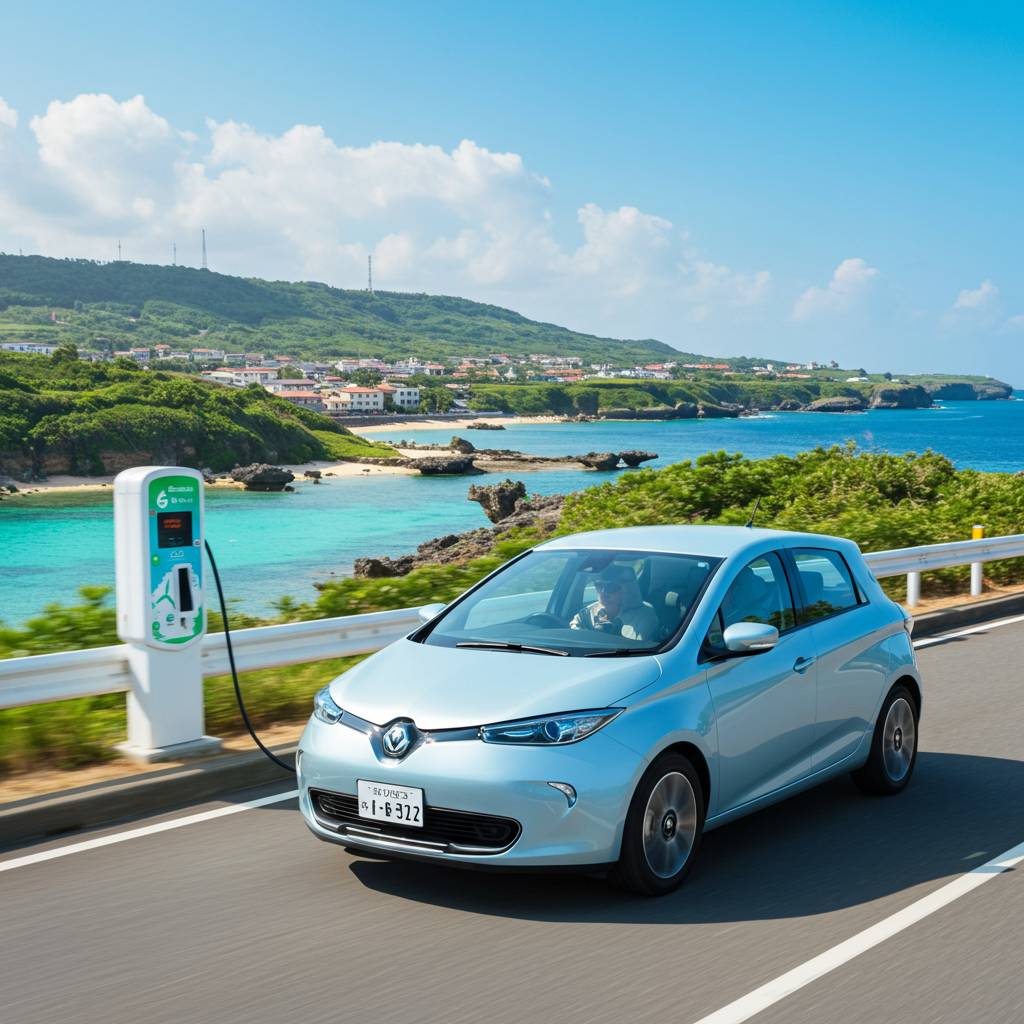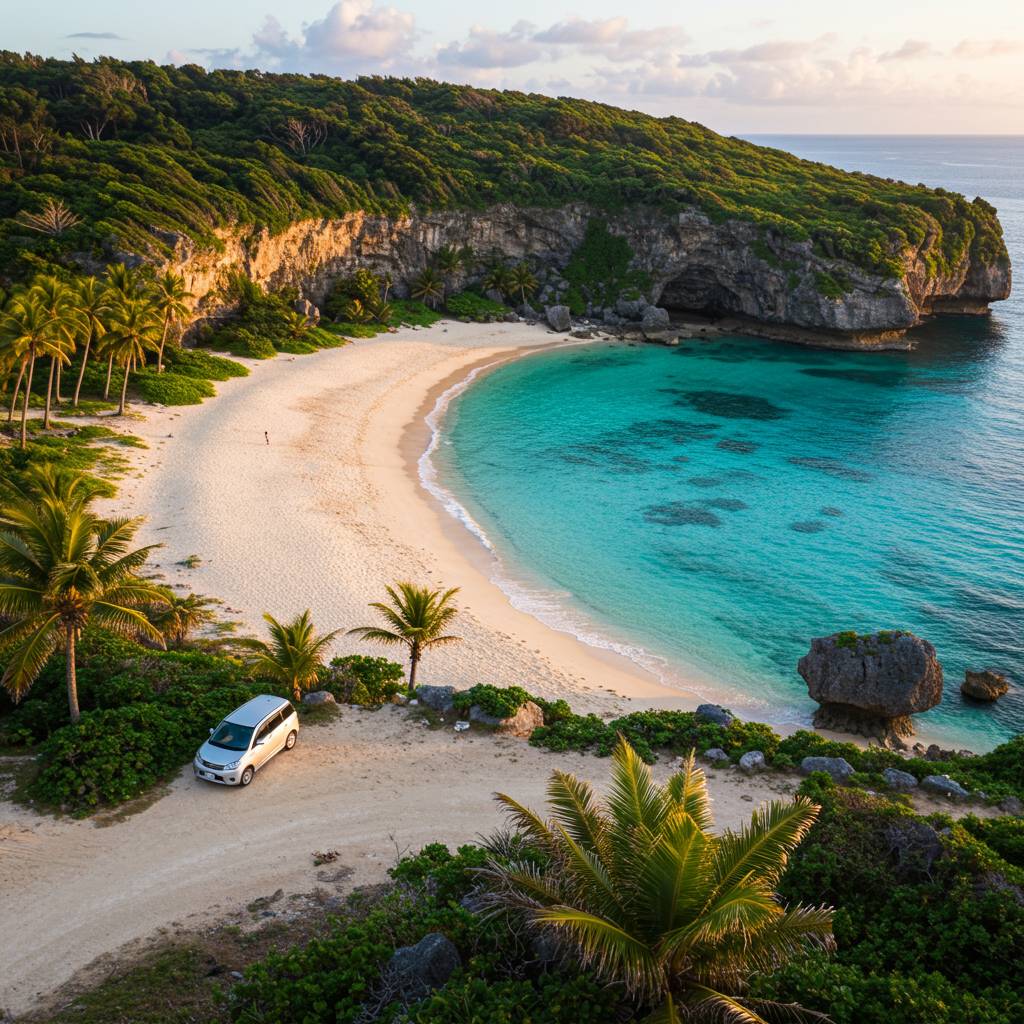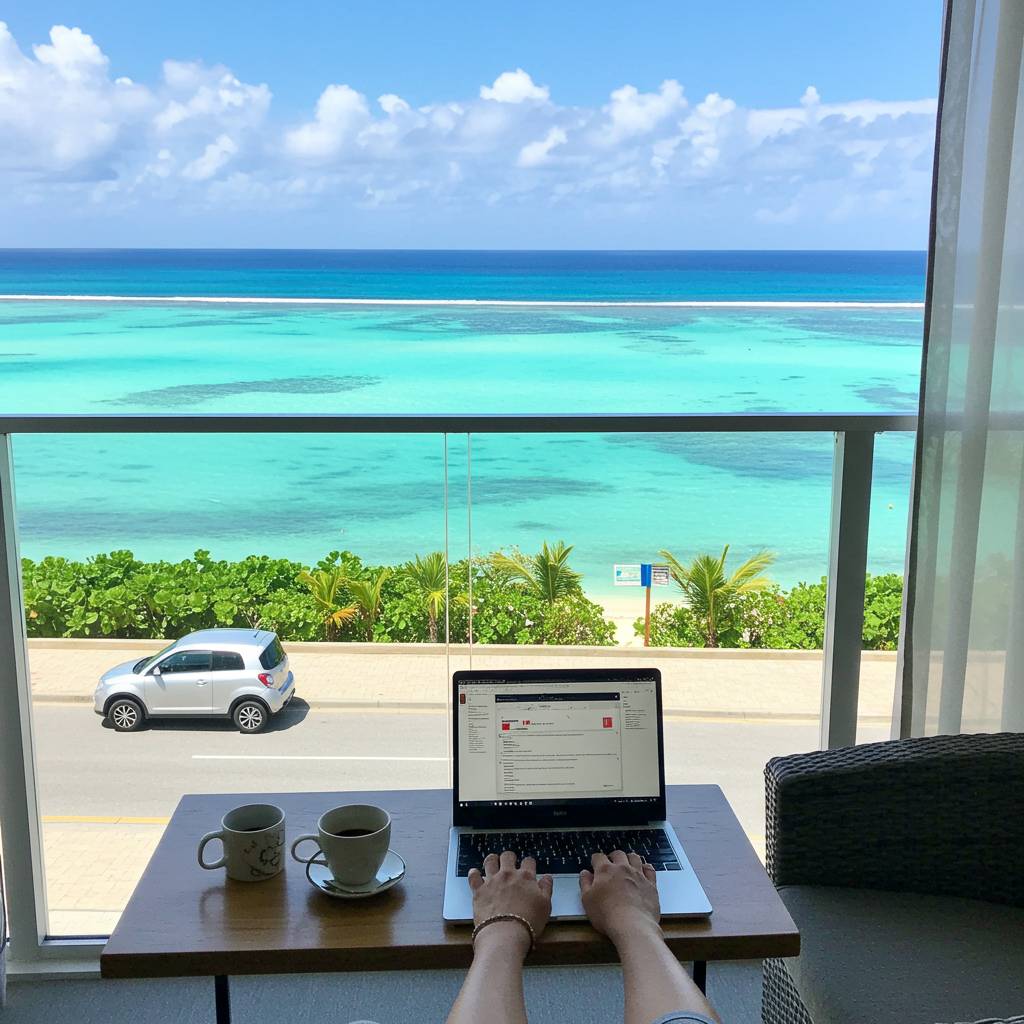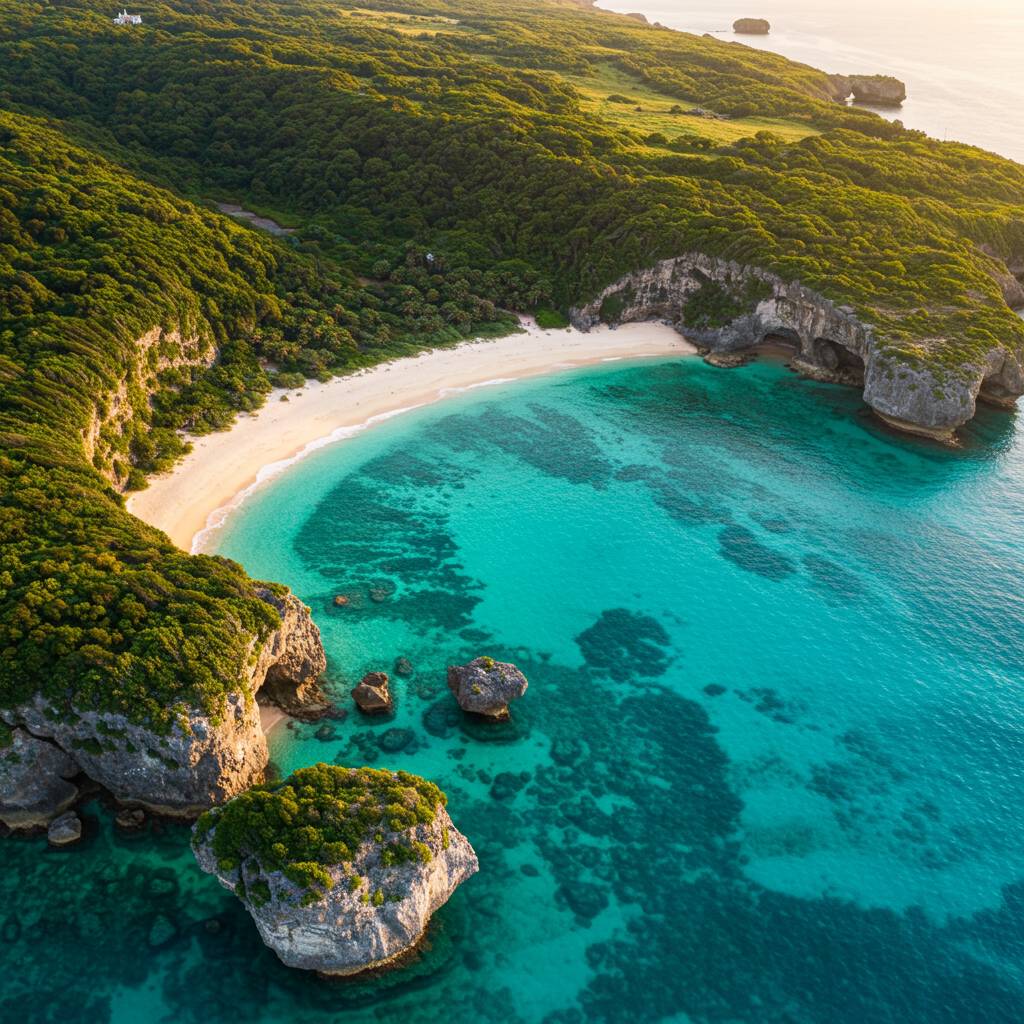Are you planning a trip to Okinawa and wondering how to escape the crowded tourist spots? While the main attractions of Japan’s tropical paradise are certainly worth visiting, the true magic of Okinawa lies in its hidden corners—pristine beaches, ancient sacred sites, and breathtaking viewpoints that most travelers never get to experience.
The secret to unlocking these extraordinary places? A rental car. Unlike many Japanese destinations where public transportation reigns supreme, Okinawa’s most spectacular treasures are often tucked away in remote locations that buses simply don’t reach. Having your own vehicle doesn’t just add convenience; it opens doors to an entirely different Okinawa experience.
In this guide, I’ll take you on a journey to 10 spectacular locations that remain blissfully under the radar, yet offer some of the most rewarding experiences on the island. From secluded white-sand beaches with crystal-clear waters to mountain viewpoints that will leave you speechless, these destinations will transform your Okinawa adventure from ordinary to extraordinary.
Whether you’re a photography enthusiast seeking perfect shots without crowds, a nature lover looking for untouched landscapes, or simply a traveler wanting to experience the authentic heart of Okinawa, these hidden gems will not disappoint. So buckle up, adjust your GPS, and prepare to discover the Okinawa that most visitors never see.
1. Unlock Okinawa’s Secret Paradises: 10 Breathtaking Spots That Require a Rental Car
While Okinawa’s main tourist spots attract millions of visitors annually, the true magic of this tropical Japanese prefecture lies in its hidden corners—places where public transportation simply doesn’t reach. For adventurous travelers seeking authentic experiences away from the crowds, renting a car is not just convenient—it’s essential. These secluded paradises showcase Okinawa’s untouched natural beauty, from pristine beaches with crystal-clear waters to lush forests hiding ancient cultural sites.
The northern region of Okinawa’s main island harbors many of these secrets, including the breathtaking Hiji Falls, accessible only via a winding road through dense subtropical forest. Similarly, the remote beaches of Kouri Island offer powder-white sand and turquoise waters that rival any postcard-perfect destination in the world, yet remain blissfully uncrowded due to their remote location.
On Iriomote Island, the mysterious Maryudo Falls requires both a rental car and a short hike, rewarding intrepid explorers with a majestic waterfall cascading into a natural pool perfect for swimming. Meanwhile, the ancient forest shrines of Yambaru National Park tell stories of Okinawa’s spiritual heritage far from the tourist trail.
What makes these destinations truly special is not just their beauty, but the journey itself—driving along coastal roads with panoramic ocean views, stopping at roadside fruit stands selling local tropical fruits, and encountering local wildlife like the Yambaru Kuina (Okinawan rail). Without your own wheels, these experiences remain inaccessible, hidden treasures waiting to be discovered by those willing to venture beyond the ordinary.
2. Beyond the Tourist Trail: Discovering Okinawa’s 10 Most Secluded Treasures by Rental Car
While mainstream tourists flock to Okinawa’s popular beaches and attractions, the true magic of this Japanese paradise lies in its hidden corners. Renting a car is not just convenient—it’s essential for uncovering these secluded treasures that remain untouched by mass tourism.
The northernmost cape of Okinawa, Cape Hedo (Hedo Misaki), offers breathtaking panoramic views where the East China Sea meets the Pacific Ocean. The winding drive through rural landscapes makes the journey as rewarding as the destination itself.
For nature enthusiasts, Kunigami Forest is a verdant wonderland housing rare Okinawan flora and fauna, including the elusive Okinawa rail. The forest’s hiking trails are accessible only via narrow roads that rental cars can navigate with ease.
The secluded Yubu Island, connected to Iriomote Island by water buffalo cart crossings, becomes an exclusive experience when you drive to the departure point outside of tour bus schedules. Similarly, the pristine Kayauchi Banta cliffs provide spectacular ocean views for those willing to venture off the beaten path.
History buffs will appreciate the lesser-known Taketomi Village with its preserved traditional Ryukyu architecture. Meanwhile, Hamahiga Island offers spiritual significance as the birthplace of Amamikyu, the creator goddess in Okinawan mythology.
The remote beaches of Hatenohama require both a rental car journey and a short boat ride, rewarding visitors with crystalline waters and untouched coral reefs. Equally impressive is Barasu Island, a coral cay accessible only during low tide from specific coastal points.
Culinary adventurers should drive to Nakijin Village to sample authentic Okinawan cuisine at family-run establishments, while those seeking tranquility will find it at Fukugawa Falls, hidden within the jungle interior and rarely visited by tour groups.
These secluded destinations offer more than just Instagram-worthy scenes—they provide authentic experiences of Okinawa’s natural beauty, rich culture, and historical significance. A rental car transforms your Okinawan adventure from a typical vacation into an extraordinary journey of discovery through landscapes and traditions that remain beautifully preserved away from the tourist crowds.
3. The Road Less Traveled: 10 Magical Okinawa Locations Only Reachable with Your Own Wheels
While Okinawa’s popular tourist spots draw crowds year-round, the true magic of Japan’s tropical paradise lies in its secluded corners. These hidden gems remain pristine precisely because they’re off the beaten path—literally. Without a rental car, these breathtaking locations would remain just pictures in a guidebook. Let’s explore ten spectacular Okinawa destinations that reward travelers willing to take control of their journey.
Kunigami Forest, located in the northernmost region of Okinawa’s main island, offers ancient woodland trails where you might spot the endangered Okinawa rail bird. The winding forest roads lead to observation points overlooking untouched coastlines that few tourists ever witness.
For beach enthusiasts, Okuma Coast provides crystal-clear waters and powder-white sand without the crowds of more accessible beaches. The journey there takes you through small villages where traditional Okinawan life continues unchanged for centuries.
Yubu Island, accessible only via water buffalo cart during low tide, becomes even more magical when you can time your visit perfectly—something only possible with your own transportation. After visiting, continue to nearby Cape Hirakubo for spectacular sunset views that tour buses simply can’t reach in time.
Hiji Falls rewards adventurous drivers with Okinawa’s tallest waterfall, nestled deep within the Yambaru National Park. The moderate hiking trail to reach it becomes a private nature excursion if you arrive early enough—another advantage of having your own wheels.
The mysterious limestone formations of Daisekirinzan offer otherworldly landscapes that feel more like another planet than Japan. Located at the northern tip of the island, these ancient karst formations are rarely included in standard tours due to their remote location.
Kouri Ocean Tower provides panoramic views of the famous heart-shaped rock and turquoise waters below. While the tower itself is a known attraction, having a rental car allows you to explore the entire island at your own pace, discovering small coves and viewpoints unmarked on tourist maps.
The pristine Gesture Beach on Iheya Island becomes accessible when you combine a rental car with the island’s ferry service—allowing you to bring your vehicle to explore this outer island’s untouched coastline and traditional villages.
For history buffs, the hidden WWII tunnels and artifacts scattered throughout Okinawa’s northern mountains provide a sobering glimpse into the island’s past. Many of these historical sites lie far from public transportation routes, making them accessible only to those with independent transportation.
The remote Hedo Point lighthouse stands at Okinawa’s northernmost tip, offering unparalleled views where the East China Sea meets the Pacific Ocean. The dramatic cliffs and crashing waves make for spectacular photography, especially during sunrise when you’ll likely have the entire place to yourself.
Finally, the secluded Adan Beach on the west coast features natural tide pools and sunset views that rival any in the Pacific. Without tour buses or crowds, you can experience the true serenity that makes Okinawa special.
Remember that navigating to these hidden treasures requires not just a rental car but also proper preparation. Download offline maps, carry sufficient water and supplies, and always respect the natural environment and local communities that make these places so special.
For rental car reservations in Okinawa, visit “RENT A CAR HIROBA”
Make the best memories of your trip at the rental car plaza!
Click here to reserve a rental car ↓
・Cheap rental cars in Okinawa are at the lowest price starting from 1,500 yen. Rent-a-car Hiroba is recommended for reservations and comparisons.
https://rentacar-hiroba.com/


